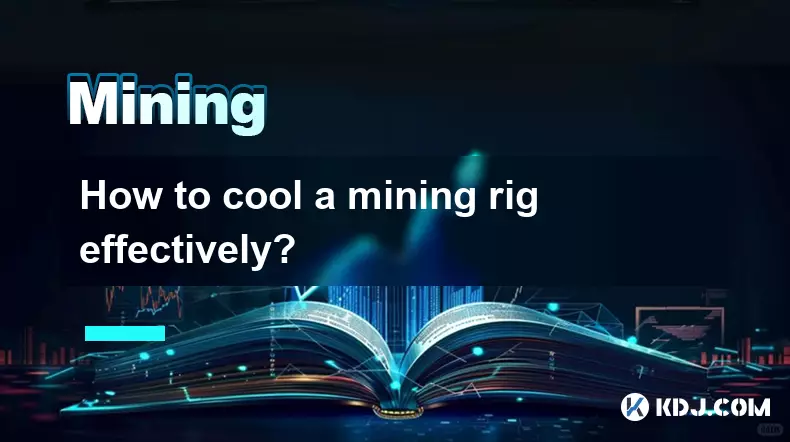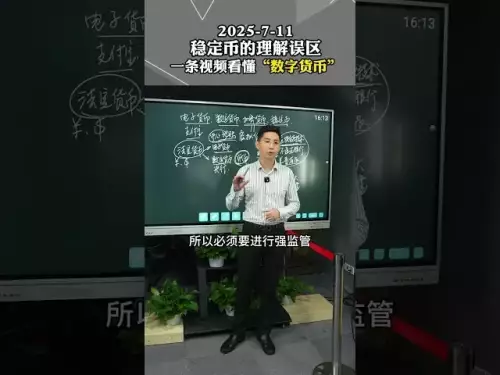-
 Bitcoin
Bitcoin $110700
-0.04% -
 Ethereum
Ethereum $4303
0.15% -
 Tether USDt
Tether USDt $1.000
0.02% -
 XRP
XRP $2.826
0.35% -
 BNB
BNB $866.1
1.08% -
 Solana
Solana $203.1
0.14% -
 USDC
USDC $0.9998
0.01% -
 Dogecoin
Dogecoin $0.2173
0.77% -
 TRON
TRON $0.3291
-0.63% -
 Cardano
Cardano $0.8274
0.26% -
 Hyperliquid
Hyperliquid $46.86
-0.14% -
 Chainlink
Chainlink $22.43
0.80% -
 Ethena USDe
Ethena USDe $1.001
0.03% -
 Sui
Sui $3.379
0.13% -
 Bitcoin Cash
Bitcoin Cash $598.4
-2.09% -
 Stellar
Stellar $0.3583
0.14% -
 Avalanche
Avalanche $24.61
1.59% -
 Hedera
Hedera $0.2195
1.45% -
 Cronos
Cronos $0.2657
-2.64% -
 UNUS SED LEO
UNUS SED LEO $9.588
0.09% -
 Litecoin
Litecoin $113.0
1.49% -
 Toncoin
Toncoin $3.089
0.37% -
 Shiba Inu
Shiba Inu $0.00001237
0.51% -
 Polkadot
Polkadot $3.853
0.42% -
 Uniswap
Uniswap $9.422
1.29% -
 World Liberty Financial
World Liberty Financial $0.2382
29.63% -
 Dai
Dai $0.9999
0.02% -
 Ethena
Ethena $0.7456
1.86% -
 Monero
Monero $267.2
-0.47% -
 Aave
Aave $302.6
0.78%
How to cool a mining rig effectively?
Optimize mining rig airflow with strategic fan placement, regular cleaning, and proper spacing to prevent overheating and extend hardware life.
Sep 04, 2025 at 05:01 pm

Optimizing Airflow in Your Mining Setup
1. Position your mining rig in a well-ventilated room where air can circulate freely. Avoid placing it in enclosed cabinets or tight corners that restrict airflow. Proper spacing between the rig and surrounding walls allows hot air to escape efficiently.
2. Use intake and exhaust fans strategically. Install intake fans at the front or bottom to pull in cool air, while placing exhaust fans at the rear or top helps expel heated air. This creates a directional airflow that prevents heat buildup inside the rig.
3. Keep components spaced apart if using multiple GPUs. Overlapping or tightly packed graphics cards trap heat, reducing cooling efficiency. Utilize riser cables to arrange GPUs in a way that maximizes exposure to airflow.
4. Regularly clean dust filters and fan blades. Dust accumulation acts as insulation, trapping heat and forcing fans to work harder. A monthly maintenance routine ensures consistent performance and cooling.
Choosing the Right Cooling Hardware
1. Invest in high-static pressure fans designed for mining rigs. These fans are built to move air through dense hardware configurations and provide stronger airflow across GPUs and ASICs.
2. Consider aftermarket GPU coolers or hybrid cooling solutions. Some miners replace stock coolers with custom water blocks or enhanced air coolers to improve thermal dissipation, especially under continuous load.
3. Monitor fan curves through mining OS software. Adjusting fan speed profiles based on temperature thresholds helps maintain optimal cooling without excessive noise or wear.
4. Use thermal pads with higher conductivity on VRAM and VRMs. Standard pads may not transfer heat efficiently under prolonged operation. Upgraded pads help reduce hotspots on critical components.
Environmental and Structural Adjustments
1. Maintain ambient room temperature below 25°C (77°F). Excessively warm environments reduce the effectiveness of air cooling. Use room air conditioning or dehumidifiers to stabilize conditions.
2. Install mining rigs on elevated racks or stands. Raising the rig off the floor prevents dust intake from carpets and improves bottom airflow, especially for rigs with under-mounted components.
3. Deploy ducting systems to channel hot air outside. Directing exhaust through flexible ducts to an external vent removes heat from the environment, preventing recirculation.
4. Avoid overclocking without adequate cooling infrastructure. Pushing components beyond stock settings increases heat output significantly and can shorten hardware lifespan if not properly managed.
Frequently Asked Questions
Q: Can I use liquid cooling for a GPU mining rig?A: Yes, liquid cooling is effective for mining rigs, particularly in densely packed setups. Closed-loop coolers or custom water-cooling loops can maintain lower temperatures, but require careful installation and leak prevention.
Q: How often should I check the temperature of my mining rig?A: Monitor temperatures daily through mining software like HiveOS or Awesome Miner. Sudden spikes may indicate fan failure or dust blockage requiring immediate attention.
Q: Is it safe to mine in a garage or outdoor shed?A: It can be safe if the environment is dry, dust-free, and temperature-controlled. Unregulated climates may expose hardware to moisture, extreme heat, or freezing conditions, increasing failure risk.
Q: Do mining rig enclosures help with cooling?A: Enclosures can help if designed with proper ventilation and active cooling. Sealed enclosures without airflow worsen heat retention. Choose models with built-in fans, filters, and exhaust ports for best results.
Disclaimer:info@kdj.com
The information provided is not trading advice. kdj.com does not assume any responsibility for any investments made based on the information provided in this article. Cryptocurrencies are highly volatile and it is highly recommended that you invest with caution after thorough research!
If you believe that the content used on this website infringes your copyright, please contact us immediately (info@kdj.com) and we will delete it promptly.
- Pepe Coin's Moon Potential Fading? Altcoins Like Remittix Steal the Show
- 2025-09-07 08:25:15
- Riding the Crypto Wave: WLFI Token Hype vs. ZA Miner's Cloud Mining Daily Profits
- 2025-09-07 08:45:13
- Meme Coins: 100x Forecasts and the 2025 Outlook – Are We There Yet?
- 2025-09-07 08:45:13
- Altcoin Leverage Alert: ENA & Market Data Show Risky Speculation
- 2025-09-07 08:50:12
- XRP, Bitcoin, and the Altcoin Market: A New Yorker's Take on the Crypto Scene
- 2025-09-07 10:30:12
- BlockDAG, Uniswap, and Chainlink: Decoding Whale Moves and Market Momentum
- 2025-09-07 08:55:12
Related knowledge

How to connect an ASIC miner to a pool?
Sep 06,2025 at 09:55am
Bitcoin's Role in Decentralized Finance Evolution1. Bitcoin remains the cornerstone of the cryptocurrency ecosystem, providing a foundation for trustl...

Why do mining pools have fees?
Sep 04,2025 at 09:18pm
Understanding the Role of Mining Pools in Cryptocurrency Networks1. Mining pools aggregate the computational power of multiple miners to increase the ...

How to under-volt a GPU for better mining efficiency?
Sep 06,2025 at 03:55pm
Understanding GPU Undervolting in Cryptocurrency Mining1. Undervolting a GPU involves reducing the voltage supplied to the graphics card while maintai...

What is a 51% attack and how does it relate to mining?
Sep 04,2025 at 04:36pm
Understanding the 51% Attack in Blockchain Networks1. A 51% attack occurs when a single entity or group gains control over more than half of a blockch...

Can I mine and game on the same GPU?
Sep 04,2025 at 09:00pm
Running Mining and Gaming Simultaneously on One GPU1. Sharing a single GPU between cryptocurrency mining and gaming is technically possible but comes ...

How to mine Kaspa (KAS)?
Sep 07,2025 at 12:54am
Understanding Decentralized Exchanges in the Crypto Ecosystem1. Decentralized exchanges (DEXs) operate without a central authority, allowing users to ...

How to connect an ASIC miner to a pool?
Sep 06,2025 at 09:55am
Bitcoin's Role in Decentralized Finance Evolution1. Bitcoin remains the cornerstone of the cryptocurrency ecosystem, providing a foundation for trustl...

Why do mining pools have fees?
Sep 04,2025 at 09:18pm
Understanding the Role of Mining Pools in Cryptocurrency Networks1. Mining pools aggregate the computational power of multiple miners to increase the ...

How to under-volt a GPU for better mining efficiency?
Sep 06,2025 at 03:55pm
Understanding GPU Undervolting in Cryptocurrency Mining1. Undervolting a GPU involves reducing the voltage supplied to the graphics card while maintai...

What is a 51% attack and how does it relate to mining?
Sep 04,2025 at 04:36pm
Understanding the 51% Attack in Blockchain Networks1. A 51% attack occurs when a single entity or group gains control over more than half of a blockch...

Can I mine and game on the same GPU?
Sep 04,2025 at 09:00pm
Running Mining and Gaming Simultaneously on One GPU1. Sharing a single GPU between cryptocurrency mining and gaming is technically possible but comes ...

How to mine Kaspa (KAS)?
Sep 07,2025 at 12:54am
Understanding Decentralized Exchanges in the Crypto Ecosystem1. Decentralized exchanges (DEXs) operate without a central authority, allowing users to ...
See all articles





















![Daily Level for 9/7/2025: Momentum by EnenzoGD (WITH COIN) [GD Daily Video #809] Daily Level for 9/7/2025: Momentum by EnenzoGD (WITH COIN) [GD Daily Video #809]](/uploads/2025/09/07/cryptocurrencies-news/videos/daily-level-momentum-enenzogd-coin-gd-daily-video/68bcd9494f8d8_image_120_90.webp)


































































